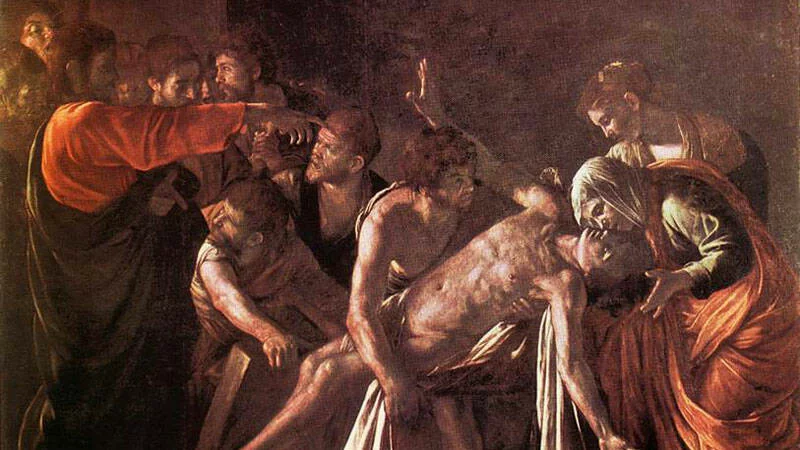The resurrection of the body, writes one seventeenth-century Christian theologian, is the “peculiar treasure” of the Christian church.Francis Turretin, Institutes of Elenctic Theology, Vol. 3 (Phillipsburg, NJ: P&R Publishing, 1997), 562.
The resurrection is peculiar because it is not a product of unaided reason but relies upon a definitive revelation in Jesus Christ. Our only confidence that our bodies are destined for glory—and not mere dissolution—lies in the physical return of our Savior from death. Our comfort comes from the sure knowledge that Jesus overcame death, was returned to his friends, and promised his followers that they would one day be raised from death themselves. No matter what persecution or plague or mere old age does to the saint’s body, death cannot overrule Jesus’ promise that “a time is coming when all who are in their graves will hear his voice and come out!” (John 5:28).
The resurrection of the body is a treasure because it is held up to the world—in times of relative peace and ubiquitous death alike—as an unrivaled and inexhaustible fount of personal hope. The doctrine of resurrection far outstrips any hoped-for vaccine or economic stimulus in its potency to lift human souls out of despair, hopelessness, and modes of self-preservation.The doctrine of resurrection far outstrips any hoped-for vaccine or economic stimulus in its potency to lift human souls out of despair, hopelessness, and modes of self-preservation. When human institutions and ambitions appear at their most frail, the hope of resurrection is shown to be most immovable. When our souls waver with incalculable ecological, economic, and epidemiological fears, the hope of our future resurrection provides unique solace and soundness of spirit. What have we finally to fear, when not only our souls but our very bodies are in the hands of the Almighty? Our Savior, though we abandoned him at Calvary, will never abandon us.
This reality—of our very selves being totally secure in Jesus Christ—is beautifully epitomised in the Church’s historic insistence on the resurrection of the very physical bodies we bear. As the Apostle’s Creed puts it, we affirm the resurrection of the flesh (carnis resurrectionem). St. Paul teaches that the hope of the Christian is in “the redemption of our bodies” (Rom 8:23) and that Christ “will transform our lowly body to be like his glorious body” (Phil 3:21). Redemption and transformation are both images of restoration and recuperation—not replacement. Augustine insists that the resurrection of the very bodies we now bear will be the most transcendent display of God’s handiwork:
God—an artist who works in marvellous and mysterious ways—will restore our bodies, with marvellous and mysterious celerity, out of the whole of the matter of which it was originally composed.Enchiridion on Faith, Hope, and Love, XXIII.89.
Aquinas and Calvin are united in chiding those who reject the resurrection of the flesh, each insisting that the very body which goes down into the earth is destined for the glory of heaven. It’s as if, when our consciousness ceases to be registered in our physical body, God himself keeps his eyes upon our flesh—following its trajectory from the moment of our death to the Day of our resurrection. The Father cares for his children so tenderly and so dearly that no part of their being ever passes out of his view.
The Psalmist writes, “Precious in the sight of the Lord is the death of His saints” (Ps 116:15). This passage always seemed paradoxical until I read it in relation to a concrete story in the Scriptures—the death of Stephen, the first Christian martyr. Stephen was stoned to death by religious leaders in Jerusalem.The Christian’s solace is that they can bring before their mind’s eye the sure hope of resurrection, turn their eyes to Jesus, and see him rising in ovation at their faith. It is a death which, after crucifixion, is one of the more unimaginably terrifying for us moderns. And Stephen faced his death with apparently no friends or family at hand. Just before the stones began to fly, Stephen lifted his eyes to heaven and declared that he saw, “the Son of Man standing at the right hand of God” (Acts 7:56). Since Christ had been seated at the right hand of the Father after his passion, resurrection, and ascension, we can say that Stephen’s vision was of Christ standing in ovation at his servant’s obedience and faith. This reading accords strongly with the powerful declaration of the Psalmist: Christ views the death of his children with gentle and with searching eyes. The teaching of the story is that Stephen had the faith to turn to Christ in the moment of his martyrdom and death. But it is also that Christ watches his servants, waiting to see what their faces do at death. Do they fall into mere panic and dissolution? Do they avoid all eye-contact, as so many of us are doing on the street during this panic-stricken pandemic? Or do they bear their eyes up to Christ, trusting in him not for earthly security or escape from death—but for resurrection.
Stephen’s example of faith in the midst of martyrdom provides a model even for those who die of disease or injury or old age. It can certainly be extended as an example to those dying in this sorrowful pandemic. Many Christians have faced and will continue to face their death. And they may face it alone. Some of the most compassion-inducing stories are those where families are separated during quarantine. Or where the elderly die alone, surrounded only by (our incredibly heroic) medical professionals. We must pray and hope that people are not required to die without their loved ones or a chaplain. We must hope that creative ways can be found (and found quickly) for quarantining measures to be relaxed sufficiently for the dying—so that at least a family member or pastor can hold their hand, or read Psalm 23, or recite the Lord’s Prayer with them. We should never push people into having to display the kind of heroic faith that Stephen displayed—by dying alone. Public health concerns cannot be allowed to automatically trump personal dignity. But what if a Christian does face death alone, with no loved ones present? What if they die waiting for ventilators in short supply? The Christian’s solace is that they can bring before their mind’s eye the sure hope of resurrection, turn their eyes to Jesus, and see him rising in ovation at their faith—the faith maintained to their last breath. May the saints then proclaim with Job:
I know that my redeemer lives,
and that in the end he will stand on the earth.
And after my skin has been destroyed,
yet in my flesh I will see God;
I myself will see him
with my own eyes—I, and not another.
How my heart yearns within me!





This is great. I just received $15000 via hack transfer from darkwebprogrammer@gm ail.c om , they awesome
I was been framed at my place of work of stealing company funds, some documents were made up showing that i was responsible for the stolen funds, I was eventually sacked and i was locked up until i was able to pay back the funds that was stolen, Then i explained my situation to a friend of mine who came to visit and he took it upon himself to make sure i was freed, He hired a group of private investigators who investigated the case and brought out the original documents out showing the real culprit and i was free at last i was later promoted at my place of work, Contact Brillianthackers800 AT gmail DOT com and also via WhatsApp +14106350697 so you can share your own victory story.
Nisam mogao vjerovati, sretan sam i ponovno sam financijski stabilan i zahvaljujem Bogu što ovakve kreditne tvrtke još uvijek postoje na ovim prijevarama posvuda, savjetujte svima koji trebaju posuditi kredit e-poštom ([email protected]) nikad ne uspijete i vaš će se život promijeniti kao i moj. Brzo kontaktirajte ([email protected]) danas i uzmite svoj zajam od njih. Obavezno kontaktirajte DAVIDSON ALBERT LOAN COMPANY za vaš kredit, jer sam uspješno dobio svoj kredit od ove tvrtke bez ikakvog stresa. Posjetite njihovu e-poštu. ([email protected]) com) nikada te neće iznevjeriti i tvoj život će se promijeniti kao i moj. Brzo kontaktirajte ([email protected]) danas i uzmite svoj zajam od njih. Obavezno kontaktirajte DAVIDSON ALBERT LOAN COMPANY za vaš kredit, jer sam uspješno dobio svoj kredit od ove tvrtke bez ikakvog stresa. Posjetite njihovu e-poštu. ([email protected]) com) nikada te neće iznevjeriti i tvoj život će se promijeniti kao i moj. Brzo kontaktirajte ([email protected]) danas i uzmite svoj zajam od njih. Obavezno kontaktirajte DAVIDSON ALBERT LOAN COMPANY za vaš kredit, jer sam uspješno dobio svoj kredit od ove tvrtke bez ikakvog stresa. Posjetite njihovu e-poštu. ([email protected])
This might interest you because I know we have different interest here online; loans are being offered at 3% rate in Mrs. Vladimira Financial Investment. She is a registered lender and I have read many testimonies about her helping all individual to get a loan despite your location or credit score all you need to do is to provide your valid Id card and sign some paperwork/document to qualify you for a loan, note you must be serious before you contact her on [email protected]